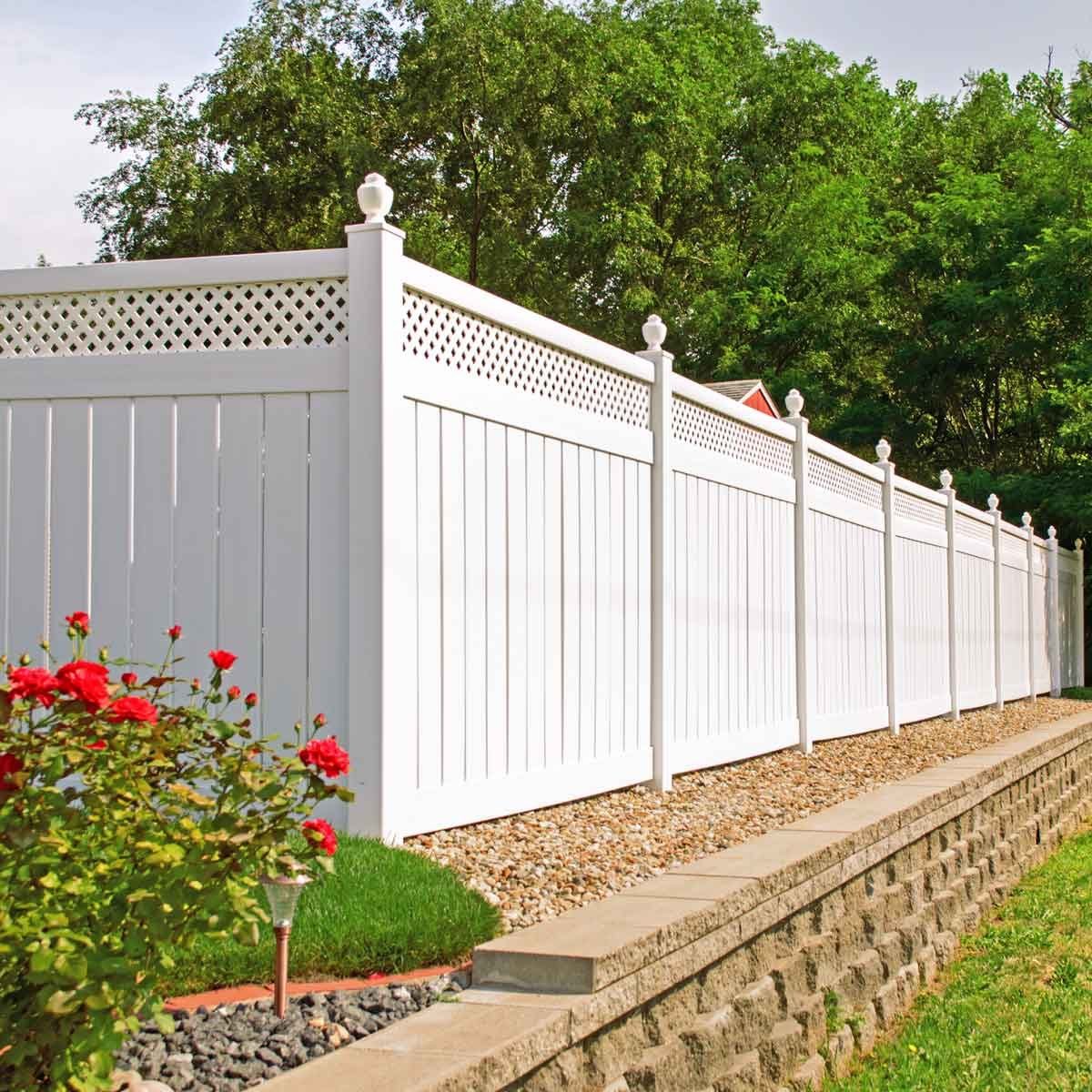It's been said that good fences make good neighbors. That may be true, but before you add a fence to your yard, do your homework.

What to Consider Before Fencing in a Yard

A beautiful fence gives a home character and curb appeal. Whether for aesthetics or functionality, putting up a fence may require more steps than you think. Homeowners need to consider some key questions: Will your municipality allow a fence? Are there underground utility lines? What about the slope of your property and what will the neighbors say?
A successful fence installation takes careful planning and preparation before construction begins.
On This Page
The Survey
If property lines are not marked already, hire a surveyor to make sure you’re not building a fence on your neighbor’s property. When applying for a permit, some localities make you submit the survey with your permit application. A survey also helps prevent any disputes with neighbors who might argue that you’re on their property.
The Permit
Many localities consider property fences structural, therefore they require a permit to install. Permits also help ensure you’re not encroaching onto your neighbor’s property. Before adding a fence, contact local building authorities to determine whether a permit is required, and if so, what guidelines and restrictions are in place.
Height and fence type are the two most likely restrictions. There may also be restrictions about adding the fence in specific locations on your property.
Call 811
Before you break ground, have your underground utility lines marked so there is no disruption when you dig fence post holes. Calling 811 makes this easy. A few business days before plan to start your digging, call 811 or use your state 811 center’s website to request that utility companies come out and mark the location of buried lines. Most use paint or flags. Once all utilities have marked their buried lines, you can dig carefully around them.
Height Limits
Height restrictions in some residential areas limit you to a four-foot-tall fence in the front yard and a six-footer in the back. However, height rules vary by location. Unless you’re in a homeowner’s association (HOA), Mike Dubar, owner of Middlebury Fence, says that in some communities fences up to six feet may not even require a permit. “Once you get eight feet or higher, they typically have many more rules and restrictions,” Dubar adds.
Note that going eight feet or higher can pose a danger. The more surface area, the greater the chance of wind damage.
Materials Matter
Material choices vary based on the purpose of the fence. Privacy fences are typically cedar or vinyl. Containment fences are typically cedar, vinyl, aluminum or chain link, says Dubar. Wood is a good all-around option for its affordability, ability to customize with stain or paint and ease of repair.
Vinyl requires little maintenance, doesn’t rot and typically comes with a lifetime warranty. A chain link fence is low cost and durable in various weather conditions. You might opt to do for a wooden split rail fence for decorative appeal with welded wire, so the fence also serves containment purposes.
Price
First, determine how much fencing you need to surround your property. Fences are measured and priced by the linear foot. Prices will vary widely depending on what material is used, the height, project complexity and even your location, says Dubar. “For example, in the Northeast, the installed price per linear foot ranges between $20 per foot to $60 per foot,” he says.
The national average is between $13 and $50 per linear foot. The total cost can go into the thousands of dollars, as it takes more time and tools to remove big boulders and other obstacles if you have them in your yard.
Installation Challenges
“You never know what will be under the ground until you dig,” Dubar says. “We have found the typical large rock, ledge and roots which can increase a day job into a three-day job. We have also found bones, old cars, diapers and demo’d buildings.”
Hard soil, roots and rocks can be tough to break through with a post hole digger or an auger, so consider getting a heavy-duty digging bar. It’s an inexpensive way to help cut through hard objects. You should also consider the slope of your property. Setting post holes incorrectly could lead to a fence that is unstable, uneven and/or unsightly.
Maintenance
Once the fence is up, you can’t just walk away. A fence is a structure that needs regular care.
Weeding and removing rocks and debris around the posts will help prevent wood rot. Also check for pests like termites, carpenter ants and bees, which can cause significant damage to your new fence. Ideally, you should hose down vinyl and aluminum fences about once a year with a fence wash and a clean cloth to prevent the buildup of dirt and moss.
Next: Find out if coyotes jump fences.



















